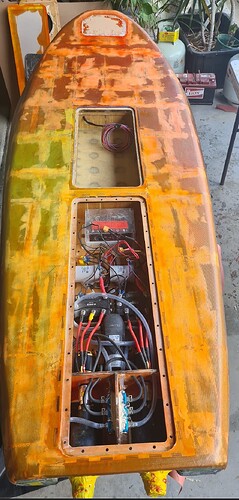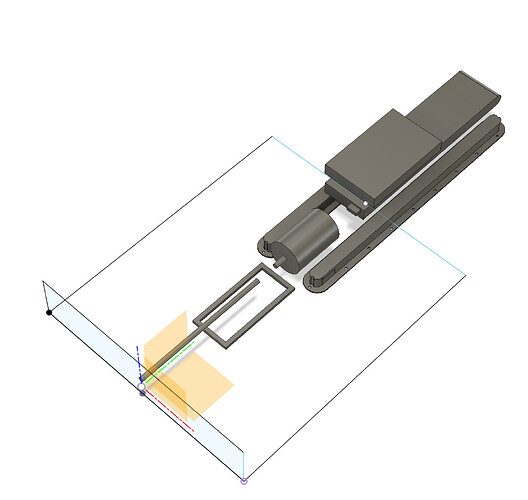Hi thefoildesigner
Great that you are taking on a project like this. They are a ton of fun. I am the inventor of the AMP board which I started back in 2019. While I can’t give exact details of where we ended up as we have spent millions in R&D getting to where we are now I can give you a couple of pointers that will hopefully help.
We are getting 25kg of thrust using a completely custom motor and ESC that has a combined weight of 500grams you start adding other electronics, batteries, shaft, seals, bearings, impeller, stator, jet housing and in our case a cartridge so it’s removable and the weight adds up quickly.
Weight is the absolute key here and thats what I would focus on.
25kg of thrust out of a jet system in a small prone board that weighs sub 7.5kg was incredibly hard to achieve. While we are going for a commercial product here our batteries have to meet many specs which add to more advance BMS and materials for impact resistance and IP ratings which does add weight. As well as our entire systems has to be highly reliable so we are keeping our customers happy.
For a one off build there are many advantages as there is a few things that you don’t have to focus on.
If you aim for around 17kg of thrust and build the jet system (52mm to 56mm) into the board that will be something that is more achievable. This was how I built the first proto that took me almost a year of work. This proto was heaps of fun and with good timing and technique it was amazing what you could get onto. With our final product I quite often have the jet set to around 15 - 18kg depending on conditions. I don’t always have it set to full thrust.
Choosing a motor, battery and ESC is not that simple as you need to know your impeller and Startor design, rpm and load. I built a plume tank (big test tank) down the side of my house. Bought a motor and ESC that was too powerful and then started to design my jet. Once you have a jet that is producing around 17kg of thrust (I would have designed over 100 impeller and stator combos just for the first Proto) then you can work out your RPM and load on the motor and that will give you a rough KV and motor size. Ideally you want to try and keep your power requirements under 3kW keep your voltage high (we run 14s) and you amps low. Otherwise things get hot, components get bigger and the whole system weighs too much. My first motor in that proto weighed 800grams. Now our final motor is 390grams.
Also you have to remember you have a mast in the bottom of the board so you need to design the jet around that which I can tell you is some fun to get around 
You don’t need a lot of battery which keeps things light but that battery has to be big enough to produce the amps. I would suggest Lipos as they can produce more amps with less voltage drop ( but don’t believe the C rating that is advertised, you want plent of headroom) They are not great for a commercial solution as the safety and cycle life isn’t great compared to Lion.
Hopefully some of that has helped
All the best, I look forward to seeing the progress.
Cheers, Chris



